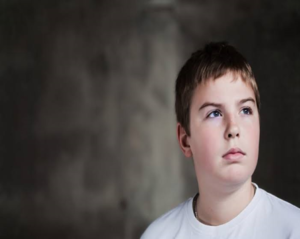Volume 13 Issues 4 April, 2023

Since time immemorial humans have resorted to lying… as a means for deception or sometimes even for the act of protection. Lying allows a person control over a situation by means of manipulation even though for a limited amount of time. Lying often begins in childhood. Studies show that children as young as two years of age can lie! Parents need not stress out if they catch their toddler lying because lying implies a certain level of brain development. Hence the milestone has been achieved. Studies on parents suggest two more very wrong beliefs one that parents estimate rather underestimate their young ones to be poor liars. Surprisingly this is wrong. You’ll know why when you look at the picture below.

This is how the face of your average 10–14-year-old looks when he is lying. Parents need to understand that children are very good liars because unlike adults their face gives little away.

The Modified Temptation Resistance Task is a paradigm to elicit Children’s Strategic Lie-telling experiment was conducted by Lamei Wang et al. in 2018. Children from ages 2 to 8 were tested for lie telling behavior. At first, they were asked to guess objects under small, inverted paper cups. After a few rounds the experimenter was to go out of the room for a few minutes. Children were asked to not peek while they were alone. However, transgression was tempting to resist, hence few kids peeked. Upon being asked with evidence (from cameras set up) the children either told the truth or lied or didn’t peek at all. It revealed the results as below –

Nearly half of the subject peeked, that too within 10 to 30 seconds of the experimenter leaving the room. Older children lied more often than the younger children. Older children were also able to come up with smart explanations when confronted with evidence. This indicated more cognitive development.
This brings us to our 2nd belief. Parents think that their offspring who lies from a very young age will go on to become a pathological liar and carry out deception throughout their lives. This is very wrong as the experiment just suggests lying in children is a proof of development of cognition avenues. So how can we exempt our innocent little ones from collaborating with deception from a young age? The first step is to understand the patterns of deceit.
Linguistic Text Analysis is a study devoted to finding patterns of deception which ultimately found four of them.
- Liars tend to be more negative and put unnecessary negative emotions into sentences. Instead of saying “my car broke down.”, they would say something like “I absolutely hate this car! It’s disgusting.”.
- Liars refer less to themselves. They will avoid referring to themselves as much as possible and would always distance themselves from the event or action to create a gap. They will prefer to use 3rd person say,” the sample was sent, and it got tested and you get a call saying hey you came back positive,” instead of saying “I was tested and came back positive”.
- Liars explain events in simple terms because it is simply difficult for the brain to create a complex lie. An infamous example is the American president Clinton who said that “he had no sexual relations with that woman” referring to Monica Lewinsky, as he was terrified that the truth would cost him his presidentship. This casts an excellent example of half-truth he used to evade the situation.
- It might come as a bit of a contradiction to the third statement, but liars beat around the bush. That is they use long and convoluted sentences to pad the deception. This is sometimes exploited by officers while questioning when they ask to tell the story backwards.
So, these were the Psychology of liars. But how can we, the common folks, spot one? Several vague things when noticed can give a hint. Like people usually resort to formal language when they tend to lie especially those in denial. They pepper irrelevant details regarding the situation. Their upper body might freeze the whole time. Too much eye contact is as good as too little eye contact to detect deception as people tend to overcompensate. You can also catch the difference between a forced smile and a real one because fake ones never cause crinkling of the eyes. The movements of the person may be jerky, and their mind upset.
This Era is the Era of technology but no doubt the arts of communication and lie spotting will remain far superior and accessible than a 100-kilogram Electroencephalogram machine. As aptly said by Pamela Meyer, author of ‘lie spotting”, “A lie has no power whatsoever by its mere utterance; its power emerges when someone else agrees to believe the lie. “
REFERENCES-
- Wang L, Wang Z. The Modified Temptation Resistance Task: A Paradigm to Elicit Children’s Strategic Lie-telling. J Vis Exp. 2018 Apr 6;(134):57189. doi: 10.3791/57189. PMID: 29683459; PMCID: PMC5933405.
- Liespotting: Proven Techniques to Detect Deception- 2010 book by Pamela Meyer, Entrepreneur, certified fraud examiner, American author.
- https://youtu.be/P_6vDLq64gE






Wonderful article!